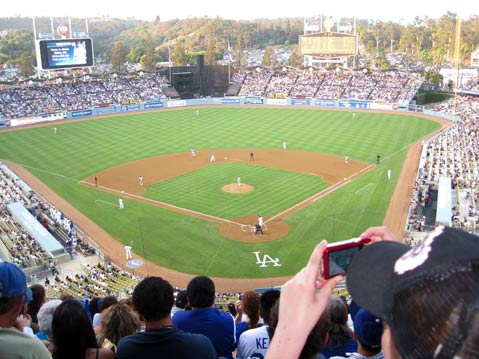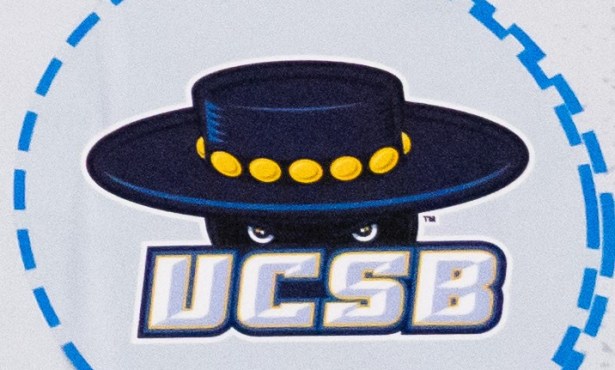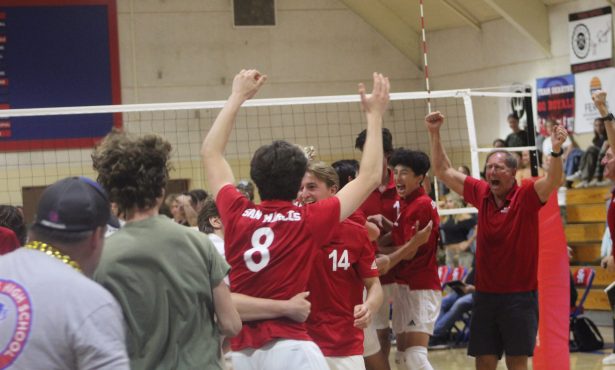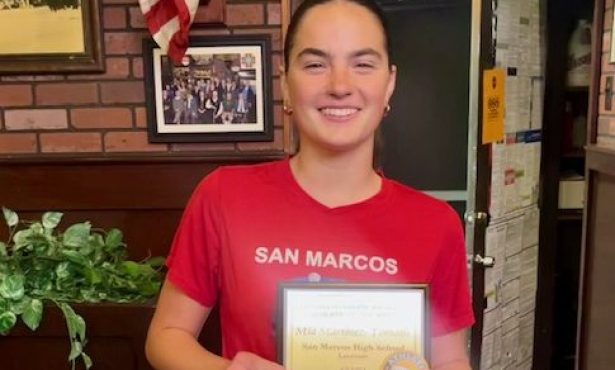Dodger Stadium Memories
The Third Oldest U.S. Ballpark Celebrates Its 50th

Dodger Stadium became the center of my sports universe when it opened in 1962. Scrape up a couple bucks (blue level reserved seats cost $1.50 the first season), borrow Dad’s car, and transport yourself to a perfectly manicured playground where big boys practiced baseball in its highest form. You might see Koufax or Drysdale pitch a masterpiece. It was even worthwhile to watch the Angels — who played at the stadium for four seasons — with Daddy Wags and little Albie Pearson.
It is hard to believe the stadium is now half a century old. The Dodgers will host the Pittsburgh Pirates in their 2012 home opener on April 10, exactly 50 years after the first game they played in Chavez Ravine, the lasting name for the 300 acres of land that were bulldozed to create a setting for the stadium and parking lots. This is even harder to believe: Dodger Stadium is the third oldest venue for major league baseball. Only Boston’s Fenway Park and Chicago’s Wrigley Field, built much earlier in the 20th century, predate it.
Even the original Yankee Stadium was deemed unsuitable for modern use. Ballparks erected later in the ’60s and ’70s seemed to age rapidly, and many were ugly to begin with. Multipurpose monstrosities like the Kingdome in Seattle were a mistake, and the only way to fix them was to blow them up and build separate dwellings for baseball and football. San Francisco and San Diego found new digs for the Giants and Padres that they can rightfully say rival Dodger Stadium for aesthetic appeal.
The popularity of Dodger Stadium has diminished because of the venality of Frank McCourt, thankfully the soon-to-be-past owner of the Dodgers. I seldom visited the shrine of my youth in recent seasons, and when I did it was not as spic-and-span as I remembered. My vision may have been permanently tainted by the afternoon I spent in the all-you-can-eat right-field pavilion. Nobody seemed to be watching the game as there was a constant flow of people to the concessions stands, where their $35 ticket entitled them to “free” food. At the end of the game, the seats and aisles were sticky with an accumulation of oozing cheese from unfinished nachos, mixed with spilled soft drinks, remnants of Dodger Dogs, and drips of mustard and relish.
The sale of the Dodgers to new owners is supposed to be consummated by April 30. (Oh, please, don’t let McCourt retain ownership of the parking lots.) At least one of the reported bidders, multibillionaire financier Steve Cohen, is said to be proposing a renovation of Dodger Stadium. Meanwhile, another extravagant Los Angeles sports project is inching forward — Philip Anschutz has plans to expand his downtown empire by building a state-of-the-art football stadium to house an NFL team near the Staples Center.
These two developments got me thinking. Why don’t Anschutz and the future owners of the Dodgers discuss a swap of sites? The Dodgers could move from the hills into the heart of downtown L.A., which is achieving some vibrancy after decades of blandness. They could build a new urban ballpark of the type that has proved so successful in San Francisco and San Diego, within walking distance of hotels and served by public transit. Chavez Ravine would be a more appropriate location for the NFL, with its vast parking area for tailgate activities. Perhaps part of a new football stadium could be built with the bones of Dodger Stadium.
This suggestion may be too far out to be considered for more than a few seconds. But, hey, nothing lasts forever. The closest thing to eternity with the Dodgers is Vin Scully, the team’s broadcast voice for 63 years. If only he could last forever. Scully has been a faithful tour guide of Dodger Stadium, never failing to mention the beauty of the place on a balmy summer evening when twilight descends on the grandstands, the surrounding hills, and the distant mountains.
One thing that can be counted on with renovations is escalating ticket prices. Affordability is no longer a strong selling point of Major League Baseball. There are alternatives for those who enjoy the sport in every town. Check out the UCSB Gauchos, Westmont College Warriors, SBCC Vaqueros, the Santa Barbara Foresters — or the high schools and youth leagues — and the sights and sounds of the game will be pleasantly familiar.
POST-HOOPS: After they went down to an 81-40 defeat against Baylor in the NCAA women’s basketball tournament, the Gauchos saw the sun come up the next morning; Brittney Griner, the fabulous Baylor center, was not there to block it out. The taste of supreme competition in Coach Carlene Mitchell’s first year can only raise UCSB’s level of play in the future. Likewise, the women of Westmont, who advanced to the NAIA Elite Eight, will be aiming high next year with most of their team returning.



